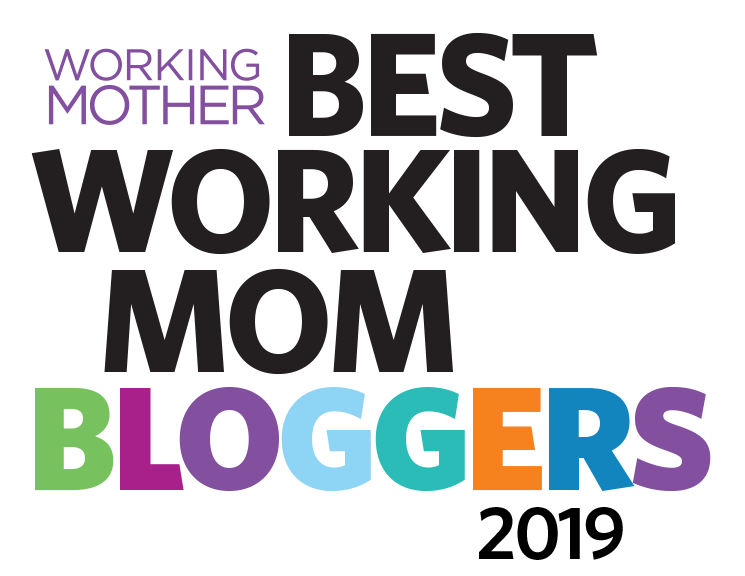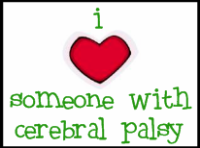Today is National Cerebral Palsy Awareness Day 2014. A day I most likely wouldn't be aware of if I didn't have a child with cerebral palsy. But I've got Max, amazing Max. And I've got you reading this. And if you are not a parent of a kid with CP, I would so love for you to understand some of the things I never knew until I had Max. More knowledge means greater understanding—and less pity.
1. Cerebral palsy is not a disease.
Cerebral palsy isn't a birth defect, either. It is not something you can catch. It is a movement disorder, the result of abnormal brain development or brain damage that typically happens in utero or during birth. Max had a stroke—his brain lost oxygen at birth—which is how we believe he ended up with CP. The causes of CP remain largely a mystery, though there is groundbreaking new research about genetic mutations linked to it and a Cerebral Palsy Genetics Collaborative Network working to gather research on it.
2. Cerebral palsy isn't so rare.
It's the most common motor disability in kids, affecting about 3 in every 1000 children. Kids typically aren't diagnosed until ages two or three. There's no definitive test for it; doctors base a diagnosis on development, observation, parental input and sometimes, an MRI.
3. There are different kinds of cerebral palsy.
The term "cerebral palsy" describes a group of movement disorders. They include spastic cerebral palsy (the most common kind), which means muscles are often stiff; athetoid cerebral palsy, which causes slow and writhing movements or fast and jerky ones; and ataxic cerebral palsy, which mainly causes issues with coordination. People can have mixed forms. Spastic CP is further categorized by which body parts are affected: Diplegic CP affects symmetrical parts of the body, often the legs; quadriplegic CP affects all four limbs; hemiplegia affects one side of the body, from arms to legs; and monoplegia affects one limb, often an arm. Max has spastic four-quad CP, with his arms and hands more affected than his legs.
4. There are varying degrees of cerebral palsy.
There are people with CP who have a bit of weakness in one arm or hand. There are people with CP in wheelchairs. There are people with CP whose speech is impaired. There are those who have perfect speech. There are those with cognitive impairment. There are ones who are geniuses. It's all a matter of where the brain damage lies, and it's a crapshoot. Doctors may tell parents the worst (the ones at the NICU said Max may never walk or talk) and yet, they can't know for sure how a child will turn out. Max has speech. He started commando crawling at 15 months, pulling himself along with his arms because his legs weren't yet strong enough to support him. At three years, he took his first step, and he's been unstoppable ever since.
5. Cerebral palsy can mess with muscles big and small.
When Max started drinking from a bottle as a baby, he had issues retaining the milk. That's when I first learned that CP (although he wasn't officially diagnosed with it till he was two) can affect your oral motor control, including swallowing. In fact, it takes about fifty pairs of muscles to move food around your mouth, chew it and get it to the stomach. Your body has hundreds and hundreds of muscles. Every single one of them moves because your brain shoots them signals to do so. Cerebral palsy affects the signals your brain sends to muscles, so they don't always work the way they're supposed to. (This is why I was in awe of Max figuring out how to wink, a relatively minuscule muscle movement.)
6. Cerebral palsy can make muscles tight or loose.
Max's muscles tend to be on the stiff side because he has high muscle tone; there's a lot of tension, especially in his arms and hands (massage helps). Some kids with CP have low muscle tone, and tend to be "floppy." Again, it's all about where the brain damage is and the extent of it. Max used to fist his hands all the time when he was a baby. His fingers have loosened up over the years—he even got Botox injections in the area to help (sadly, they weren't offering stressed-out mothers any discounts). Still, his thumb is usually pressed up against his pointer finger, as if it's glued to it. As you can imagine, this makes picking up objects a little tricky (try it), although Max perseveres and grasps stuff as best he can. Sometimes at night I go into his room while he's sleeping and hold his hands, marveling at how loose they feel when his body is totally relaxed.
7. Cerebral palsy can be different every day.
When Max is cold, his muscle tend to be more stiff, exactly why he should be regularly vacationing in tropical islands. When he's excited or nervous, his muscles also tense up. I used to wonder whether it hurt him until he was finally able to express to me whether or not something pains him and so far, so good, although muscle aches can be an issue for kids and adults with CP.
8. There is no cure for cerebral palsy.
There is a shocking lack of research about cerebral palsy—and a lack of funding for it (and if you care to write your Congressional reps about that, pleasepleaseplease, find their contact info here). In the meantime, there are effective therapies out there to ease symptoms and enable kids with cerebral palsy achieve their potential: speech therapy, occupational therapy (to help with fine-motor skills like picking things up or grasping a ball), physical therapy (to help with gross-motor skills, including standing, crawling and walking) and feeding therapy. Kids can get therapy in pools (aquatic therapy) or even while on horseback (hippotherapy). There's a range of alternative therapies, too; as a baby, Max got hyperbaric oxygen treatment. When he was six, he got a stem cell transfusion. Dave and I have a motto: If it can't hurt and it might help, we'll do it. Some children with CP wear braces on their feet to help them better move, as Max does. Sometimes, their feet get casted to prevent them from turning inward or outward. Kids with severe spasticity in their lower limbs may need surgical procedures to ease muscle tone.
9. Cerebral palsy doesn't disable your personality.
Max's spirit isn't disabled. Neither is his personality, his disposition or who he is at heart. People just need to look past the physical disabilities to see the person in there. Same goes for adults. And with that, I bring you comedian Maysoon Zayid and her recent TEDTalk I Got 99 problems...Palsy Is Just One.
10. You shouldn't feel bad for people with cerebral palsy.
Max may have more challenges than other kids, and more visible ones at that, but he takes them in stride because cerebral palsy is part of who he is. He's not sitting around feeling sorry for himself—all he knows is to be himself. So please, don't bring him down with pity; treat him like you treat any other kid. Though by all means, if you'd like to take him (and me!) on a tropical vacation, just let us know.











Thanks for the information! My daughter has spastic diplegia after being born 20 weeks premature. When we adopted her, we were told she would never ride a bike, never run, and never be able to play the way other kids do. At 18 she is on her high school bowling team, rides a 10-speed, is learning to drive, swims like a fish and loves school dances. She went prom dress shopping yesterday. So she'll never be able to wear heels or run a marathon. She has a full and amazing life.
ReplyDeleteThe concept of people with CP having a "full and amazing life" can be hard for people to understand. Thanks for sharing just how amazing (and typical!) your daughter is.
DeleteMax sounds amazing! And you sound like a great mom. Thanks for all this information. It's so valuable for those of us with no first hand exposure to CP to know.
ReplyDeleteMax is amazing! I also have cerebral palsy as well. I have Spastic Left Hemiplegia. You're an amazing mom.
ReplyDeleteMax rocks! Thanks for stopping by.
Deleteabout treatments - have you ever looked into biofeedback? just curious about it.
ReplyDeletegreat post by the way.
No, we haven't done biofeedback. If you've had experience with it, please do share here!
DeleteI like how matter of fact this list is! And I love that you included the link to Maysoon Zayid's TED speech!
ReplyDeleteI have watched this video maybe five times now!
Deletethanks so much for this. after 16 years, i still get asked questions about my son's CP, and it's just... exhausting sometimes. if you and max are ever in Oakland, CA, you should come visit us!
ReplyDeleteWouldn't it be so great if we could have one gigantic meeting of parents and kids with CP?
DeleteI think this applies to all of us.
ReplyDeletethanks for this posting I have shared it with a Facebook group for Adults with CP, we greatly appreciate your doing this.. come check us out www.thecpgroup.org
ReplyDeleteWonderful! Thank you.
DeleteI too love the calmness and relaxed muscles at sleep in my boy. Almost makes me forget ;) just before I had Coop my last client at work had CP and that was really my first exposure. ( I used to work with kids with disabilities and access funding for them to attend mainstream services such as kindergarten ) . Go Max go!
ReplyDeleteI knew nobody with CP before Max. And now, I know so many awesome kids and adults with it.
DeleteCorrecting a few misconceptions -
ReplyDeleteDiplegic CP doesn't *just* affect the arms or *just* affect the legs - it affects one set of limbs *more* than the other. For instance, I have diplegic CP and my legs and arms are about equally affected - though I had hamstring, heel cord and adductor lengthenings when I was 5 which greatly improved my functioning in my legs. If I hadn't had that, my legs would be much more severely affected than my arms.
Quadriplegic CP affects all four limbs equally. That's the difference between diplegia and quadriplegia.
There is no cure for CP, and frankly, as an adult with CP, I don't want one. CP is part of who I am. I dislike when organizations urge us to "pray for a cure" or "stand up for a cure", etc. because not everyone wants a cure. Some people do and if they make a reasonable, rational, informed choice I can't really argue with that (as much as I may want to). If they find a cure for CP, that's great for people who really want it - but my fear is that it will become forced onto people who are happy the way they are.
And adding my own...
People with CP use three to five times the amount of energy that people without CP do when they walk and move, according to the National Institute on Neurological Disorders and Stroke. Our muscles (at least in spastic CP) are continually working against us. That is why I prefer to use a wheelchair when it is logistically possible - it is SO much easier for me to do things when I'm not using all my energy on standing and walking. A wheelchair is not a failure or a mark of shame. My wheelchair gives me freedom as do my other mobility aids. :)
Thanks for these important clarifications/adds, Cara. I do understand not wanting a cure and have mused about this; if Max were to be "cured" he wouldn't be the kid I know and love. But then, if it were to make life easier for him, how could I say no? If a cure existed, though, it wouldn't be my choice--it would be his.
DeleteThanks for this awesome post! I have a son with spastic hemiplegia and I learned a lot today just reading around the internet. I stumble across your blog a lot. I actually wrote my own blog post inspired by yours! :)
ReplyDeleteGreat post, Kammy!
DeleteThanks for this post. .I was wondering if you have heard of Selective Dorsal Rhizotomy? My son has spastic diplegia. He had SDR 2 years ago and is doing amazing. . SDR permanently removes the spasticity in the legs. It is another treatment to help improve movement and make life easier.
ReplyDeleteHi, Bernadette. I've heard of it, and I know of a lot of kids with CP who have been helped by it. Max's leg muscles aren't stiff enough for it. I wish there were an arm version—that's where so much of his tightness lies.
DeleteYou forgot 2, spastic triplegia which affects 3 limbs and spastic pentaplegia which affects the whole body. But it is a great awareness post. My daughter has spastic monoplegia and until now I thought that was the only form of spastic CP.
ReplyDeleteWhat a great article! There are so many misconceptions around CP and people still know so little about it. Such posts and sharing them across people is definitely a very helpful step forward.
ReplyDeleteI teach at a school in Ghana for kids with special needs. Four of my students have CP, and I just found your blog tonight. What a great resource! Thank you for sharing. Sounds like you're lucky to have Max, and Max is lucky to have you!
ReplyDelete